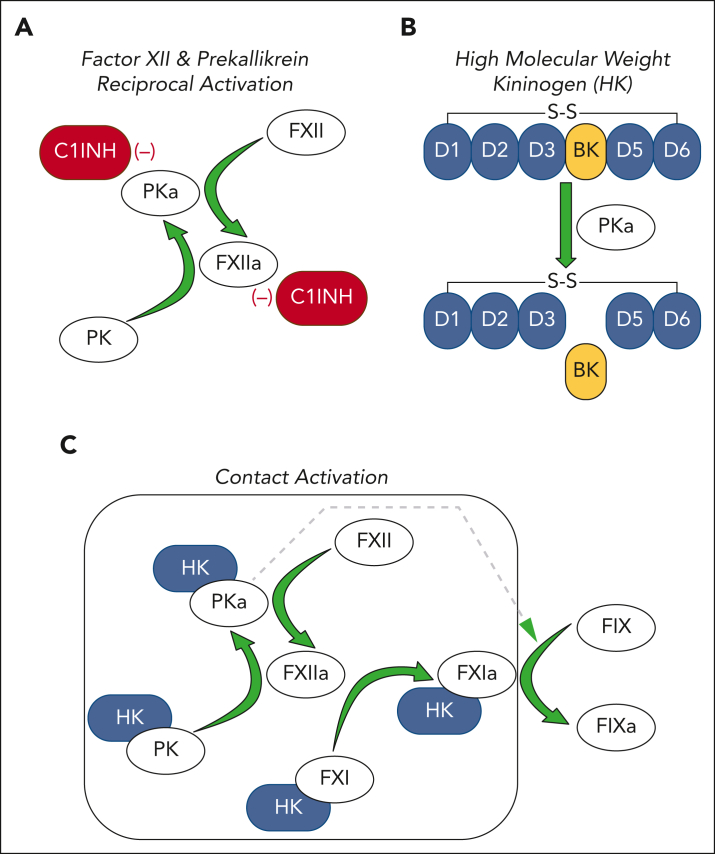The plasma KKS and contact activation. (A) The plasma zymogens FXII and PK undergo reciprocal activation in solution to the proteases FXIIa and PKa, respectively. This process is restricted by C1-INH, which inhibits both FXIIa and PKa. (B) Most PK in plasma circulates in a complex with HK. HK has 6 domains (D1-D6), the fourth of which contains the 9 amino acid bradykinin (BK) sequence. PKa cleaves HK at 2 locations to release bradykinin. (C) FXII, PK, and HK bind to a variety of surfaces (gray box). This enhances FXIIa and PKa formation and BK generation by a process called contact activation. HK serves as a cofactor for PK binding to the surface, in addition to being a substrate for PKa. During contact activation, FXI also binds to the surface in an HK-dependent manner and is converted to the active protease FXIa. FXIa activates the coagulation protease FIX to FIXa, which drives thrombin generation and plasma clot formation. PKa also activates FIX but much less efficiently than FXI. In all panels, green arrows indicate protease-mediated reactions.

An official website of the United States government
Here's how you know
Official websites use .gov
A
.gov website belongs to an official
government organization in the United States.
Secure .gov websites use HTTPS
A lock (
) or https:// means you've safely
connected to the .gov website. Share sensitive
information only on official, secure websites.
